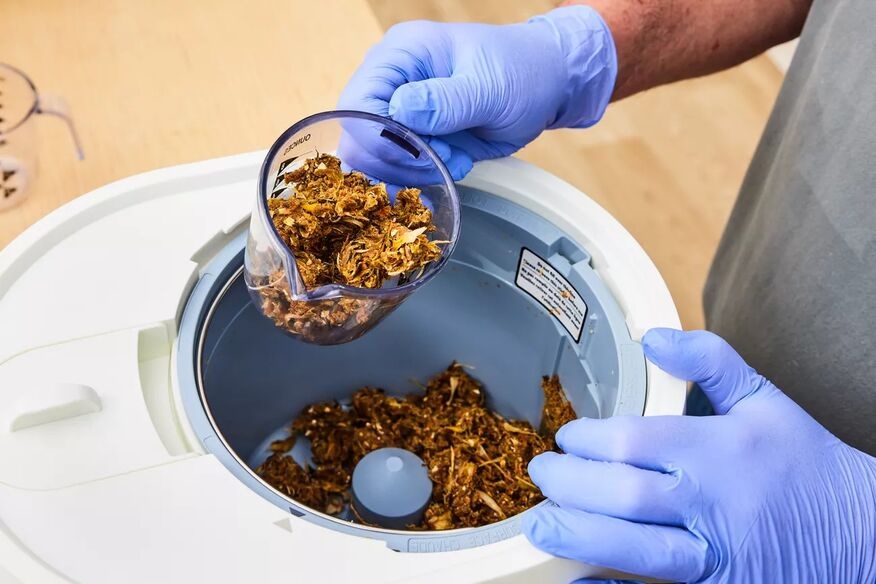No More Mistakes with Flour Mill Machine Manufacturer
Mar 11 2023

If
you’re a gardening enthusiast or someone passionate about sustainable farming,
you already know the magic of composting. Turning food scraps into
nutrient-rich soil is like giving your garden a superfood boost. But if you’ve
recently invested in a smart
composter, you might wonder how to get the most out of it. What food scraps
should you toss in? How can you maximize its efficiency? This article explains
the best practices for making your composting journey as productive as
possible.
Various
food scraps can go into a smart
kitchen composter, but some break down better than others. Here are the top
choices:
Peels,
cores, and leftover bits from fruits and vegetables are ideal for composting.
They are packed with nutrients that enrich the soil and break down quickly in
an electric system. Banana peels, apple cores, carrot tops, and potato skins
are great additions. Citrus peels are fine in small amounts, but too many can
make the compost overly acidic.
Used
coffee grounds are rich in nitrogen, which helps create balanced compost. Tea
leaves, both loose and in bags, also contribute valuable nutrients. If using
tea bags, check that they are compostable since some contain plastic that does
not break down properly.
Crushed
eggshells add calcium to the compost, which is beneficial for plants. While
they take longer to break down in traditional composting, an electric composter
turns them into a fine, soil-friendly material.
Unlike
outdoor compost bins, a smart composter can handle small portions of cooked
food. Leftover rice, pasta, and bread can be processed efficiently. However, avoiding
large amounts of oily or heavily seasoned foods is best.
Peanut
shells, almond shells, and similar nut casings break down well in a composting
system. Walnuts, however, contain a natural compound that can be toxic to
plants, so it is best to leave them out.
Unbleached,
non-glossy paper products like egg cartons and paper towels can be composted.
They help balance moisture and add texture to the finished compost. Just make
sure they are free of inks, dyes, or plastic coatings.
While
these composters can handle a lot, certain items cause problems:
●
Meat, fish, and dairy in large amounts – These
can create odors and may not break down completely.
●
Oils and greasy foods – These slow down the
composting process and can coat other materials, making decomposition less
effective.
●
Hard bones and large pits – Composters may
struggle with items like avocado pits and large bones, so it is best to leave
them out.
●
Plastic, metal, or glass – Even tiny bits of
non-organic materials can contaminate compost, so always double-check what goes
in.
Getting
the best results from a smart kitchen composter is all about balance and technique. Here are some simple ways to
improve its performance:
Breaking
down food scraps before adding them helps speed up processing. Large chunks
take longer to grind and heat, so chopping up peels, stems, and other scraps
improves efficiency.
Compost
works best with the right mix of moisture and structure. If food scraps are too
wet, the compost may come out soggy. Adding dry materials like paper towels or
crushed eggshells can help absorb excess moisture.
Filling
the composter beyond its recommended capacity can slow down the breakdown
process. Keeping portions within the suggested limits ensures that everything
processes evenly.
Once
the compost is ready, mix it into garden soil, add it to potted plants, or use
it in raised beds. Composters produce material rich in nutrients, but it works
best when combined with soil rather than used alone.
A
quick clean after several cycles keeps the composter working well. Removing
stuck bits of food and wiping down the inside helps prevent odors and keeps the
motor running smoothly.
Composting
does not have to be messy or time-consuming. A smart composter makes the
process fast, easy, and accessible for anyone looking to reduce food waste.
Instead of tossing scraps in the trash, they can be transformed into a valuable
resource that benefits plants and soil.
Social Media Marketing Strategies for Beginners
Mar 14 2023
(0) Comments